After-sales service at ETA S.A. Grenchen
This case study describes the after-sales solution ETA ONLINE SHOP (EOS), which allows customers of the ETA Customer Service to order parts directly from ETA Customer Service (ETA-CS) via an extranet. As a result of this facility the ordering process is faster and more transparent and the service quality has been improved. ETA attained a higher level of customer retention and realised a cost reduction in the labour-instensive areas of sales assistance and administration.
1. Background, The company
ETA SA Fabriques d'Ebauches, with headquarters in Grenchen, is one of the world’s leading providers of mechanical and quartz movements and their components. ETA’s portfolio also includes the production of Swatch watches and components for the automotive industry. The enterprise is a member of the Swatch Group and supplies both companies within the group and external firms. ETA’s clockworks keep the time with chiming names such as Omega, Longines, Rado, Tissot, Swatch as well as other internationally known watch brands.
In 2002 the Swatch Group comprised some 160 firms conducting business in the watch and jewellery industry. In organisational terms, both the vertical and the horizontal orientation of the company’s portfolio is remarkable (see Fig. 1). Vertically, everything is represented in the group, from manufacture of single watch wheels to the sales channel in the form of proprietary Swatch shops. Horizontally, what is most impressive is the large number of watch brands present in a variety of market segments.
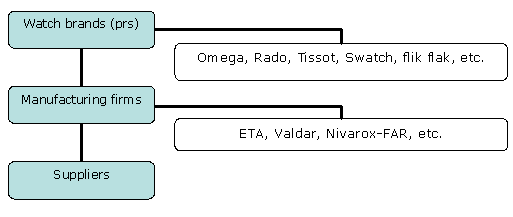
Figure 1: Organisation of the Swatch Group
- ETA SA:
ETA SA Fabriques d'Ebauches was established at the end of the 18th century from various independent manufacturers (watchmakers) and has since developed into a global player in the manufacture of movements and components. As Fig. 1 shows, ETA is classified as a production company within the Swatch Group.
In 2002, ETA SA Fabriques d'Ebauches employed some 8,500 employees making it the largest subsidiary of the Swatch Group. The company produces in 15 locations in Switzerland, Germany, France, Thailand, Malaysia and China.
- Customer service:
The solution described in this case study was implemented in the ETA Customer Service (ETA-CS) area. ETA-CS provides a wide range of services. Customers can order technical information, parts and have their watches repaired. Another service it offers in regard to parts delivery is packing according to customer-specific requirements.
The CS department operates as a profit centre and is part of the Marketing & Sales unit (see Fig. 2).
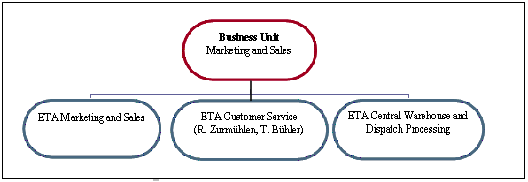
Figure 2: Internal organisation of the Marketing and Sales business unit
Fig. 3 illustrates the tasks and services of ETA-CS.
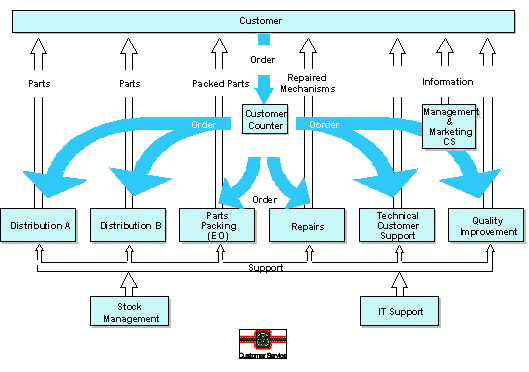
Figure 3: Process map of ETA-CS with workflows
As shown in Fig. 3, job orders are received centrally at Customer Counters and then passed on to CS-internal processes.
2. Background to the challenge
- Vision:
The problem of the customer must be placed at the centre of consideration. An optimum solution to the problem, however, cannot be reduced to merely the object to be sold. When ordering parts, it is also of decisive importance to the customer how fast a product is delivered and whether s/he can count on professional advice in the case of ordering difficulties.
With regard to parts sales, ETA-CS is in a seller’s market. Only ETA-CS can supply the original parts needed to repair an ETA movement. Prior to the introduction of the EOS, however, it was evident that ETA-CS regularly failed to meet customer requirements to full satisfaction with regard to delivery speed. As a result, customers ordered through intermediaries, who in turn submitted their consolidated orders to ETA and stocked the goods themselves.
Therefore the vision lay in improving understanding of the customer perspective and in solving customer problems more efficiently.
First, the “parts ordering” process should be elucidated (see Fig. 4):
- Ordering:
In the first place, the customer ordered a replacement part by letter or fax. The information provided by the customer was often insufficient in detail as no clear prescribed form for orders existed.
- Identification:
When an order was received at the ETA-CS Customer Counter, the content of the order had to be assigned an ETA-CS product number. This took an immense amount of time. In order to identify the right product, it was necessary in some cases to contact the customer or goods warehouse. Thus the average time required to complete identification was 10 minutes per ordering position, with an average of 250 per day.
- Forwarding:
The correct order could only be entered into the distribution process once it had been definitely identified.
- Dispatch:
Items were dispatched within Switzerland by means of the Swiss postal service. Customers in foreign markets could name a preferred shipper.
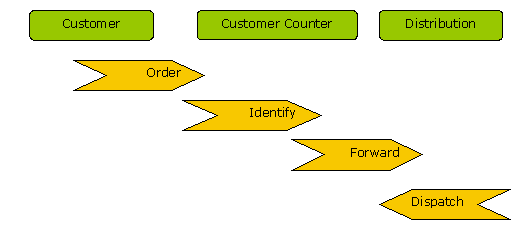
Figure 4: Parts ordering prior to optimisation
3. Solution
Before the customer places an order, s/he requires technical documentation for the clockwork in question, s/he wants transparency with regard to the purchase cost of the replacement part and s/he wishes to receive the delivery as quickly as possible.
Both technical documentation and pricelists are made available to the customer in the internet. Given that the entire product master data is available online, it is a logical next step to offer the customer online ordering facilities. At the same time, this presents a benefit for ETA-CS: namely, the subprocess of "identification" (see Fig. 4), intensive in cost and in time, is eliminated.
Since a watch movement is composed of a multitude of single parts, it is not always easy for customers to find the precise product identifier for the part. If the task of identification is to be completed by customers, aids to facilitate this must be placed at their disposal. Technical documentation, good search functions and precise product identifiers are all great helps when placing orders.
Frequently, moveover, certain movements may no longer be in production, yet its parts can be used in newer clockworks. Therefore it is important for customers to have information on interchangeability available for every part.
In order to achieve the efficiency increases targeted for the ETA, it follows that the solution must be designed in such a way that the tasks described above are completed with maximum automation. This requires an electronic database to be set up which not only contains the entire range including pricelists but can also hold the documentation and interchangeability information.
The noticeable differences in parts ordering following optimisation are that the interpreting employee on the ETA-CS side has been eliminated and that the complexity of the process has been reduced (see Fig. 5).
- Identification:
Correct identification of the required part is now carried out by the customer. This task is completed in the EOS using the sophisticated search function and access to technical documentation. A further benefit for the customer is the improved transparency with regard to costs, as prices and sales conditions can be called up. - Ordering:
The order process can now take over the data from the identification process seamlessly with the aid of the shopping basket function. In addition, the order process assures that necessary order information is recorded, such as method of payment and delivery address. As the order is now transacted in a standardised way, the data could be taken over electronically by the ordering processing software. This has not yet been implemented, but is planned. - Dispatch:
Service providers for transportation logistics are now already linked up to the EOS directly. Connection is established with the aid of the logistics marketplace Logistics Browser whose task is to provide a standard interface for offerings of several providers. Thus the interface between the EOS and the Logistics-Browser must only be implemented once to give customers a large selection of logistics service providers. The interface designed by Logistics Browser is bidirectional. First the shipping order is recorded and then triggered by the employees in the distribution process. Logistics Browser supplies tracking and tracing information for customers of the ETA-CS.
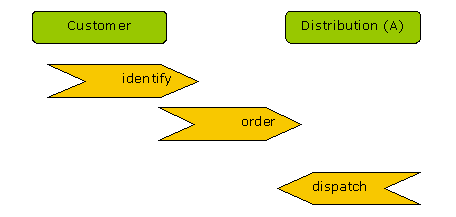
Figure 5: Parts ordering after optimisation
- How it works:
The EOS is accessed via an encrypted internet connection with the aid of a commercially available web browser. Only registered ETA-CS customers who have applied for a user name and a password can log in.
Once the user has successfully logged in the product search is displayed (see Fig. 6 ). The user now has three different search functions for selecting the right movement.
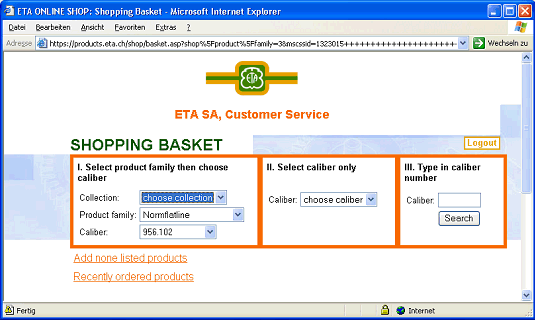
Figure 6: EOS product search
Using the search functions, technical documentation for each movement can immediately be viewed on the screen or printed out. Documentation is available in six different languages - unlike the shop, which is in English, and the product master data, which is in French.
Whenever the user selects a clockwork mechanism, a list of available single parts is displayed (see Fig. 7). For every single part a detailed view can be opened which provides more detailed information about the product’s features and shows which other clockworks also use the components (interchangeability information).
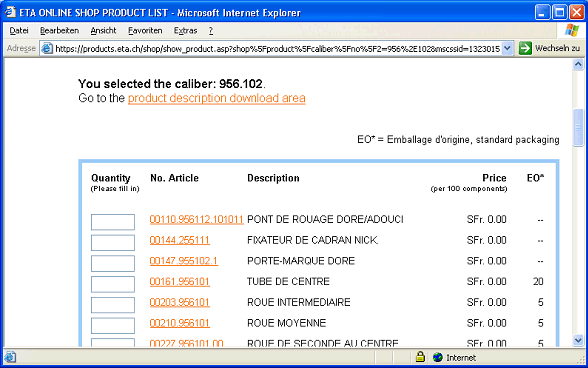
Figure 7: EOS product list
There are, however, still more ways to order: users can call-up a display of parts already ordered and easily add these to the shopping basket using the "recently ordered product" list. If a product cannot be found another function enables the customer to add products to the shopping basket with the aid of free text (add non-listed products).
Once the shopping basket is complete, the order can be thoroughly checked and then dispatched using the web browser. Payment can be made either by credit card or on receipt of an invoice.
- Software solution:
The software solution is based almost completely on Microsoft products. Windows NT is the operating system used along with an MS SQL server for the database and MS Site Server Commerce Edition for the shop software.
ETA-CS uses Ramco, the ERP (Enterprise Resource Planning) software system from Indian developer Ramco Industries Ltd . Data exchange between the EOS and the ERP software has two interfaces since, firstly, the EOS needs the product data and secondly, order processing must take place in the ERP.
- Realisation partners:
ETA had already been collaborating with the University of Sankt Gallen (HSG) prior to the realisation of the EOS; the company had, among other projects, been involved in one of the university’s projects sponsored by the National Science Foundation entitled "Business network redesign. Reorganisation of distributed processes in mid-sized and large companies". This project ran from March 1996 to the end of March 2000. The methods developed as part of this project were applied successfully for the first time. The ETA benefited from the collaboration through access to the university’s consulting expertise.
When it came to realisation of the EOS, Namics AG was selected to carry out technical realisation. Established as a spin-off to the University of Sankt Gallen, Namics is today one of the leading providers of professional internet services in Switzerland and is one of the largest companies in this industry sector, employing some 130 people. In addition to the its headquarters in Sankt Gallen, Namics has branch offices in Geneva, Frankfurt, Hamburg, Constance, Milan, Zug and ZĂĽrich. PubliGroupe owns 75 per cent of Namics; the remaining 25 per cent is in the hands of the management.
4. Operation
- Utilisation:
Today between 60 and 70 per cent of the items ordered are processed with the aid of the EOS. With a daily total of approximately 250 items ordered this translates into roughly 480 working hours per month [1], which can be saved through optimisation of the parts ordering process.
- Updating:
The databases are updated as part of the stock management process (see Fig. 3). In principle, product data is updated in Ramco and then imported into the EOS. This data is not sufficient, however; the interchangeability information and technical documentation have to be gathered from ERP-external data sources since no ERP provides a standard for gathering this data. It would not be economically viable to extend the ERP software in this way.
Since updates cannot therefore be carried out in a completely automated way, the EOS database is updated in practice about once a week. This may occur more frequently depending on the number and the urgency of changes.
- Maintenance:
The EOS is hosted in an ETA-internal IT department and since its introduction has run with astonishing stability. The longest breakdown in three years of operation was one day. When faults do occur they are mostly due to incorrectly compiled import data.
In the majority of cases realisation of further developments of EOS is initiated by ETA Customer Service itself. Customers are also known to suggest improvements. Thus on customer request a comments field was programmed for every order item allowing customers to enter a reference to their own identification systems.
5. Benefit and costs
In the evaluation of economic viability, it was primarily the time saving criterion which was decisive. The initial assumption was that the nine minutes previously taken to identify products could be saved by optimising the process.
The time saving and the conjecture that the solution could be realised cost-effectively by collaborating with the university and pilot customer status at Namcis provided the motivations for realisation of the project.
A break-even point has not been established for the solution.
The total external costs of consulting and programming services for realisation of the EOS (including the tracking function) amounted to some CHF 260,000. No precise details are available on expenditure and workload, either incurred internally or in connection with the project sponsored by the Swiss National Science Foundation.
ETA-CS is convinced that it has succeeded in keeping the costs of the entire realisation very low, a success due mainly to the especially favourable conditions prevailing at that time for a future reference project at Namics and the collaboration with the university.
As already mentioned, the benefit for ETA-CS lies in the time saved in product identification. Roughly 24 hours working time per day has been saved. The wage costs of an employee on the Customer Counter amount to around 60 Swiss francs per hour, which already translates into a saving of 1440 francs per working day.
6. Success factors
An incomplete list of success factors which contributed to the project’s success:
- Incorporation of pilot customers
The incorporation of pilot customers proved advantageous. Faulty functions could be discovered before they caused substantial damage. Thus customer requirements were already forthcoming during the development phase.
- Know your own products inside out
It cannot be taken for granted that sufficient knowledge of product range and stock content exists in a company. Often there may be a lot of knowledge of stock available among specialist department employees, but this knowledge is not necessarily accessible to other employees or customers without the latter having to go to inordinate lengths to obtain it. What is more, knowledge is frequently lost on departure of a specialist. Stock volumes tend to inflate in such cases and information on areas of stock are not available in sufficient quality.
- Make knowledge of your own products available
In terms of IT, consistently organised stock and product systems must also be gathered sensibly. For reasons of data consistency, redundant databases must be avoided when changes are made to product data. Redundancy cannot, however, be completely eliminated for reasons of security and performance. Added to this is that the ERP solution consists to the maximum possible degree of standard software and EOS is custom software, due to the specific challenge (interchangeability information, etc.) at the outset. This results in variations in data models and hampers data exchange between these components.
- Communicate new developments correctly
It is precisely in traditionally rather conservative industry sectors where political, internal and external obstacles cannot be underestimated. These obstacles can be overcome with a solution that provides convincing benefit and is communicated correctly.
![]()
[1] 5000 items ordered x 9 minutes of time saved/item ordered x 0.65 EOS rate, divided by 60 minutes/hour



